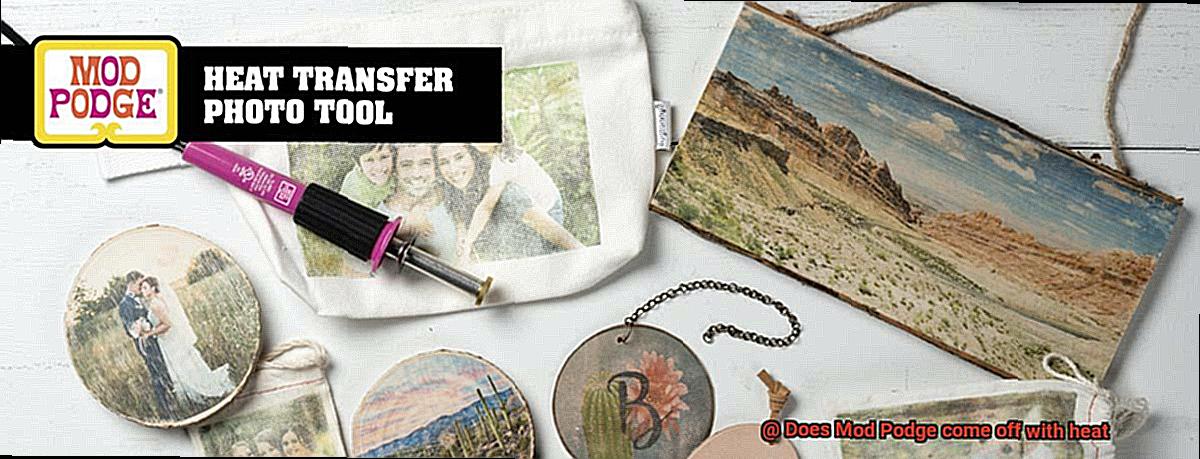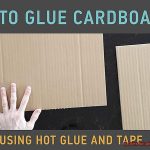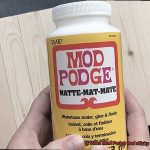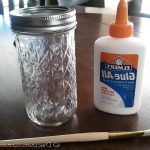Get ready to uncover the truth about everyone’s burning question: Does Mod Podge come off with heat? If you’re a crafty individual who loves to get your hands dirty with decoupage or any other creative project, then you’ve probably wondered if applying heat can undo all your hard work. Well, fear not my fellow crafters. Today, we’re diving headfirst into the mesmerizing world of Mod Podge and its mystical behavior when exposed to heat.
Mod Podge, that trusty glue, sealer, and finish combo that has become a staple for DIY enthusiasts everywhere. But what happens when things start heating up? Will Mod Podge melt away like a popsicle on a hot summer day? Will it leave your masterpiece in ruins?
In this blog post, we’re going to explore the ins and outs of Mod Podge and how it reacts when things get steamy. We’ll take you through different scenarios involving heat and give you some nifty tips and tricks to make sure your projects stay rock solid.
So grab your crafting tools and buckle up as we embark on this adventure together. Get ready to have all your burning questions answered: Does Mod Podge come off with heat? Prepare yourself for an enlightening journey into the realm of decoupage as we unveil the secrets behind Mod Podge’s resistance to heat. Let’s get started.
What is Mod Podge?
Contents
- 1 What is Mod Podge?
- 2 Does Mod Podge Come Off with Heat?
- 3 Reasons Why Mod Podge Can Be Removed with Heat
- 4 Using a Hairdryer or Heat Gun to Remove Mod Podge
- 5 Placing the Project in an Oven to Remove Mod Podge
- 6 Excessive Heat and Prolonged Exposure Can Damage the Underlying Surface
- 7 Additional Cleaning Methods May Be Required for Complete Removal
- 8 Conclusion
With its remarkable ability to bond materials together and create stunning finishes, Mod Podge is an indispensable tool for any crafting project. Let’s embark on a journey into the world of Mod Podge and discover why it is a must-have in your creative arsenal.
What is Mod Podge?
- Mod Podge, developed by the ingenious mind of Jan Wetstone, is a brand name for a decoupage glue.
- Specifically designed for the intricate art technique of decoupage, Mod Podge allows you to adhere paper or fabric cutouts onto surfaces with ease.
- This water-based adhesive is not only powerful but also easy to clean up with just soap and water.
Versatility at Its Finest:
- Mod Podge truly shines when it comes to versatility, effortlessly working on porous surfaces like wood, paper, fabric, and cardboard.
- But wait, there’s more. It can also be used on non-porous surfaces such as glass and plastic, expanding your creative possibilities.
- With options like matte, glossy, and satin finishes, you can customize your project’s look to perfection.
Easy Application:
- Applying Mod Podge is a breeze – just grab a brush or sponge applicator and enjoy even distribution across your chosen canvas.
- As it dries clear, Mod Podge leaves behind a smooth and glossy finish that elevates the overall appearance of your masterpiece.
Protection and Preservation:
- Beyond its adhesive qualities, Mod Podge acts as a sealant, safeguarding your creations from moisture and external damage.
- Delicate items like cherished photos or precious artwork find a safe haven with Mod Podge, ensuring their preservation for years to come.
Safe and User-Friendly:
- Craft without worry. Mod Podge is non-toxic, making it suitable for crafters of all ages.
- And should spills or mistakes occur (we’re only human, after all), cleaning up is a breeze with just soap and water.
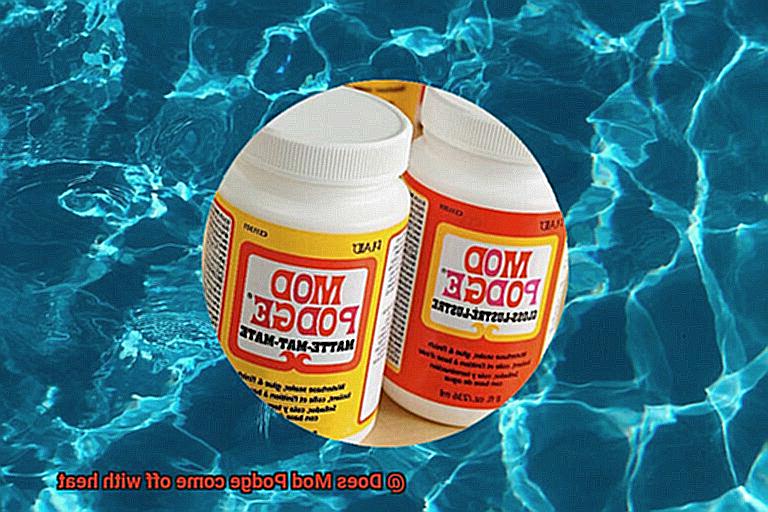
Removing Mod Podge with Heat:
- Thanks to its water-based formula, Mod Podge can be easily removed with heat.
- Gently apply heat from a hairdryer or heat gun to soften the adhesive, enabling you to scrape it off or wipe it away.
- Remember to exercise caution to avoid any damage to the underlying surface.
Does Mod Podge Come Off with Heat?
One question that often arises is whether Mod Podge can withstand heat. In this comprehensive guide, we will delve into the world of Mod Podge, exploring its composition, how heat affects it, and what measures you can take to protect or remove it when necessary.
The Science Behind Mod Podge:
Mod Podge is a unique crafting medium that combines water, polyvinyl acetate (PVA), and other additives. When applied to a surface, it dries to form a clear, protective layer that can be used for decoupage, sealing, and finishing projects. It is important to note that Mod Podge is primarily a water-based adhesive.
The Impact of Heat on Mod Podge:
As a water-based adhesive, Mod Podge can soften and become tacky when exposed to heat. This makes it susceptible to damage or peeling off, especially at higher temperatures. The specific temperature at which Mod Podge starts to soften can vary depending on factors such as the thickness of the layer applied and the duration of exposure to heat. To prevent potential damage, it is generally recommended to avoid subjecting Mod Podge to temperatures above 150°F (65°C).
Protecting Mod Podge from Heat:
While Mod Podge may not hold up well under direct heat, there are precautions you can take to protect your projects from potential damage caused by heat exposure. Here are some tips:
- Use a Heat-Resistant Barrier: Place parchment paper or a silicone mat between your project and the heat source to create a protective barrier.
- Maintain Safe Distances: Keep the heat source at a safe distance from your project to minimize the risk of damaging the Mod Podge.
- Opt for Low Temperatures: When using heat tools, such as a hairdryer or heat gun, use low heat settings to reduce the chances of softening or peeling of Mod Podge.
- Be Mindful of Everyday Temperature Fluctuations: Mod Podge can withstand normal household temperatures, making it suitable for indoor use and display.
Removing Mod Podge with Heat:
Surprisingly, heat can also be used as a method to remove Mod Podge from a project. By gently warming up the adhesive with a hairdryer or heat gun, you can soften it and then carefully scrape it off using a plastic scraper or your fingernail. Remember to exercise caution and patience throughout this process to avoid damaging the underlying surface.
Reasons Why Mod Podge Can Be Removed with Heat
Heat can come to the rescue. In this blog post, we will explore the reasons why Mod Podge can be removed with heat and how it can save the day.
Evaporating Water:
Did you know that Mod Podge is primarily made up of water? That’s why heat is so effective in removing it. When heat is applied to Mod Podge, the water molecules evaporate, reducing the stickiness of the adhesive. Just like when water dries up and surfaces become less slippery, heat makes Mod Podge less adhesive and easier to remove.
Softening Superpower:
Heat possesses an incredible ability to soften Mod Podge. It’s similar to warming up butter, making it easier to spread. When Mod Podge is heated, it becomes more pliable, allowing you to gently scrape or peel it off without causing any damage to your project.
Breaking Bonds:
Chemical bonds hold Mod Podge together, but heat has the power to break them down. When you apply heat to Mod Podge, the molecules become more mobile. They lose their stickiness and cannot hold on tightly anymore. It’s like a superhero weakening its grip on a villain.
Formula Matters:
Not all Mod Podges are created equal. Some formulas, such as dishwasher-safe or outdoor Mod Podge, are tougher and more resistant to heat. If you’re using these types of Mod Podges, you might need to try alternative removal techniques like sanding or using special solvents.
Safety First:
When using heat to remove Mod Podge, safety should always be your top priority. Different surfaces may react differently to heat, so it’s crucial to test a small area first. Additionally, avoid using excessive heat or direct flames, as they can potentially damage or change the color of your project.
Using a Hairdryer or Heat Gun to Remove Mod Podge
Imagine spending hours creating a masterpiece only to realize you made a mistake or changed your mind about the design. Don’t panic. In this guide, we’ll walk you through the process of using a hairdryer or heat gun to safely remove Mod Podge from surfaces, ensuring minimal damage and following safety precautions.
Materials Needed:/strong>
- Hairdryer or heat gun
- Plastic scraper or fingernail
- Rubbing alcohol or specialized adhesive remover
- Clean cloth
Step-by-Step Instructions:/strong>
Test the Heat: Before proceeding, test the heat on a small, inconspicuous area to ensure it won’t damage or discolor the material.
Hairdryer Method:
- Set the hairdryer to medium or high heat.
- Hold the hairdryer about 6 inches away from the Mod Podge.
- Move the hairdryer back and forth over the area, allowing the heat to soften the adhesive.
- Once the Mod Podge is softened, gently scrape it off using a plastic scraper or your fingernail.
Heat Gun Method:
- Use caution due to the concentrated heat of a heat gun.
- Set the heat gun to a low or medium setting.
- Hold the heat gun about 6 inches away from the Mod Podge.
- Move the heat gun back and forth over the area until the adhesive softens.
- Carefully scrape off the softened Mod Podge using a plastic scraper or your fingernail.
Clean Residue:
- After removing Mod Podge, there might be residue left behind.
- Apply a small amount of rubbing alcohol or adhesive remover to a clean cloth.
- Gently rub the residue until it is completely removed.
Remember to exercise caution, test the heat on a small area, and avoid excessive heat that can harm delicate surfaces like wood or fabric. If in doubt, consider alternative methods such as soaking in warm soapy water or using a commercial adhesive remover designed for Mod Podge.
Placing the Project in an Oven to Remove Mod Podge
We’ve all been there – you’ve completed a project, only to realize that you made a mistake or had a change of heart about the design. But fear not. There is a solution to salvage your masterpiece without causing any major damage. One effective method to remove Mod Podge is by placing your project in an oven. Let’s dive into the process step-by-step.
First and foremost, check the compatibility of your materials. Some materials, like plastic or delicate fabrics, may warp or melt when exposed to high temperatures. So, it’s better to be safe than sorry.
Now, preheat your oven to a low temperature, around 200-250 degrees Fahrenheit. This gentle heat will help soften the Mod Podge for easy removal.
To protect your oven from any sticky residue, line a baking sheet with parchment paper or aluminum foil. Trust me, you don’t want to create another mess.
Carefully place your project on the lined baking sheet and transfer it into the preheated oven. Let it bake for about 10-15 minutes, but keep a close eye on it to prevent overheating.
While your project heats up, watch out for any bubbling or browning of the Mod Podge. If you notice this happening, quickly remove your project from the oven to avoid further damage.
Once the baking time is complete, use oven mitts or heat-resistant gloves to carefully take your project out of the oven. Now comes the fun part – removing the softened Mod Podge. Grab a soft cloth or sponge dampened with warm water and gently wipe away the Mod Podge. It should come off easily without much effort.
For those stubborn areas that refuse to budge, try using a plastic scraper or an old toothbrush to gently scrape off the remaining residue. Just remember to be gentle and avoid scratching or damaging your project.
After removing all of the Mod Podge, give your project a good rinse with warm water to remove any leftover residue. Pat it dry with a clean cloth, and voila. Your project is now Mod Podge-free and ready for a fresh start.
It’s important to note that this method may not work for all types of Mod Podge or projects. Some formulations may require different removal techniques, such as soaking in warm water or using adhesive removers specifically designed for Mod Podge. So, don’t be discouraged if this method doesn’t work for you. Experimentation and patience are key when finding the best removal method for your unique project.
Excessive Heat and Prolonged Exposure Can Damage the Underlying Surface
Excessive heat and prolonged exposure can wreak havoc on the underlying surface when Mod Podge is applied. Mod Podge, the versatile adhesive and sealer beloved by artists and craft enthusiasts, has a few vulnerabilities that must be heeded.
First and foremost, Mod Podge is not invincible when it comes to heat. When exposed to excessive temperatures, this adhesive can undergo a dramatic transformation. It softens. It melts. And worst of all, it can peel off the surface it was meant to protect, leaving your project in ruins.
The specific temperature at which Mod Podge starts to soften or melt varies depending on its formulation and the materials it is applied to. But one thing is clear: this adhesive is not designed to withstand high heat, whether it’s from a blistering heat gun or a fiery oven.
However, it’s not just direct heat that can cause damage. Even placing objects with Mod Podge in hot environments can lead to disaster. The adhesive deteriorates under these conditions, compromising both its strength and the integrity of the underlying surface.
And let’s not forget about sunlight. Prolonged exposure to those UV rays can also contribute to the degradation of Mod Podge over time. So, if you’re thinking of displaying your Mod Podge masterpiece near a sun-drenched window, think again.
To ensure the longevity of your Mod Podge-coated surfaces and protect them from the scorching wrath of excessive heat, take some precautions. Keep your projects away from heat sources like ovens or heaters, and shield them from direct sunlight for extended periods.
But what if you find yourself in a sticky situation where you need to remove damaged Mod Podge? Fear not. There are solutions available. You can utilize solvents specifically designed for removing adhesive, which help break down the softened Mod Podge for easier removal. Another option is gently scraping off the softened adhesive using a plastic scraper or credit card.
Additional Cleaning Methods May Be Required for Complete Removal
While applying heat can certainly help loosen the glue, it may not always guarantee complete removal. In this comprehensive guide, we will delve into the reasons why additional cleaning methods may be required for the complete elimination of Mod Podge.
Heat is a Great Start, But Not Always Enough:
- Applying heat, using a hairdryer or heat gun, can effectively soften Mod Podge.
- Exercise caution to prevent damage or discoloration to the surface.
- Thicker layers or dried Mod Podge may necessitate further cleaning techniques.
The Gentle Art of Scraping:
- Employ a plastic scraper or an old credit card to gently scrape off the softened Mod Podge after applying heat.
- Avoid exerting excessive pressure or scraping too forcefully to avoid surface damage.
Solvents to the Rescue:
- In cases where remnants of Mod Podge persist after heat and scraping, solvents like rubbing alcohol or acetone come to the rescue.
- Apply a small amount of solvent onto a clean cloth or cotton ball and gently rub the affected area until the Mod Podge is lifted off.
Test Before You Tackle:
When in Doubt, Seek Professional Assistance:
- Delicate or porous surfaces may require professional advice or assistance for safe and effective Mod Podge removal.
- Professional cleaners and restoration experts possess the expertise to handle various materials without causing harm.
Cwoi5CEQ9IU” >
Conclusion
In conclusion, Mod Podge is a versatile adhesive and sealer that adds a touch of magic to any crafting project. While it’s a water-based adhesive at its core, it does have some resistance to heat. However, when faced with excessive heat and prolonged exposure, Mod Podge can soften, melt, or peel off the surface like a delicate flower wilting under the scorching sun.
To shield your Mod Podge creations from the fiery wrath of heat damage, precautions are key. Employ a trusty heat-resistant barrier such as parchment paper or a silicone mat to stand between your masterpiece and the searing heat source. Keep that source at a safe distance and crank down the temperature dial when using tools like hairdryers or heat guns. And for goodness sake, don’t subject your Mod Podge-coated wonders to hot environments or relentless sunlight for extended periods – they deserve better.
Now, if you find yourself needing to part ways with Mod Podge on a particular project, fear not. Heat can come to the rescue as your trusty sidekick in this sticky situation. Gently warm up the Mod Podge with your faithful hairdryer or trusty heat gun, allowing it to soften like butter on a sizzling pan. Armed with either a plastic scraper or your handy-dandy fingernail, carefully scrape away the softened adhesive layer by layer. Should any stubborn residue remain steadfastly stuck in place, call upon rubbing alcohol or specialized adhesive removers to save the day.
But heed this warning: not all Mod Podges are created equal. Some formulas possess an ironclad resistance to heat and may require alternative removal techniques for their surrender – think soaking in warm soapy water or employing commercial adhesive removers specifically designed for these formidable foes.
In summary, while Mod Podge can indeed be removed with the power of heat, caution should always be exercised. Test any cleaning method on a small, inconspicuous area first to ensure the preservation of the underlying surface.

